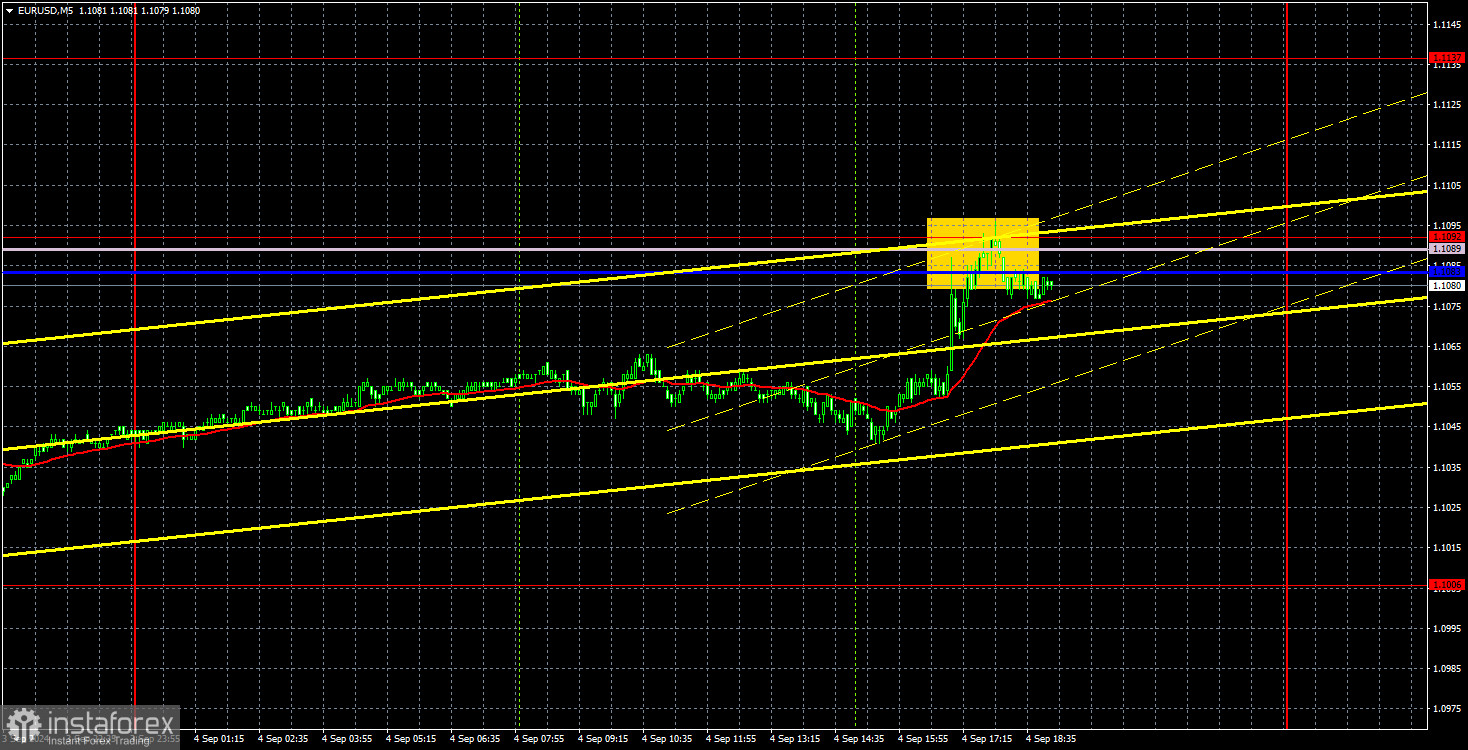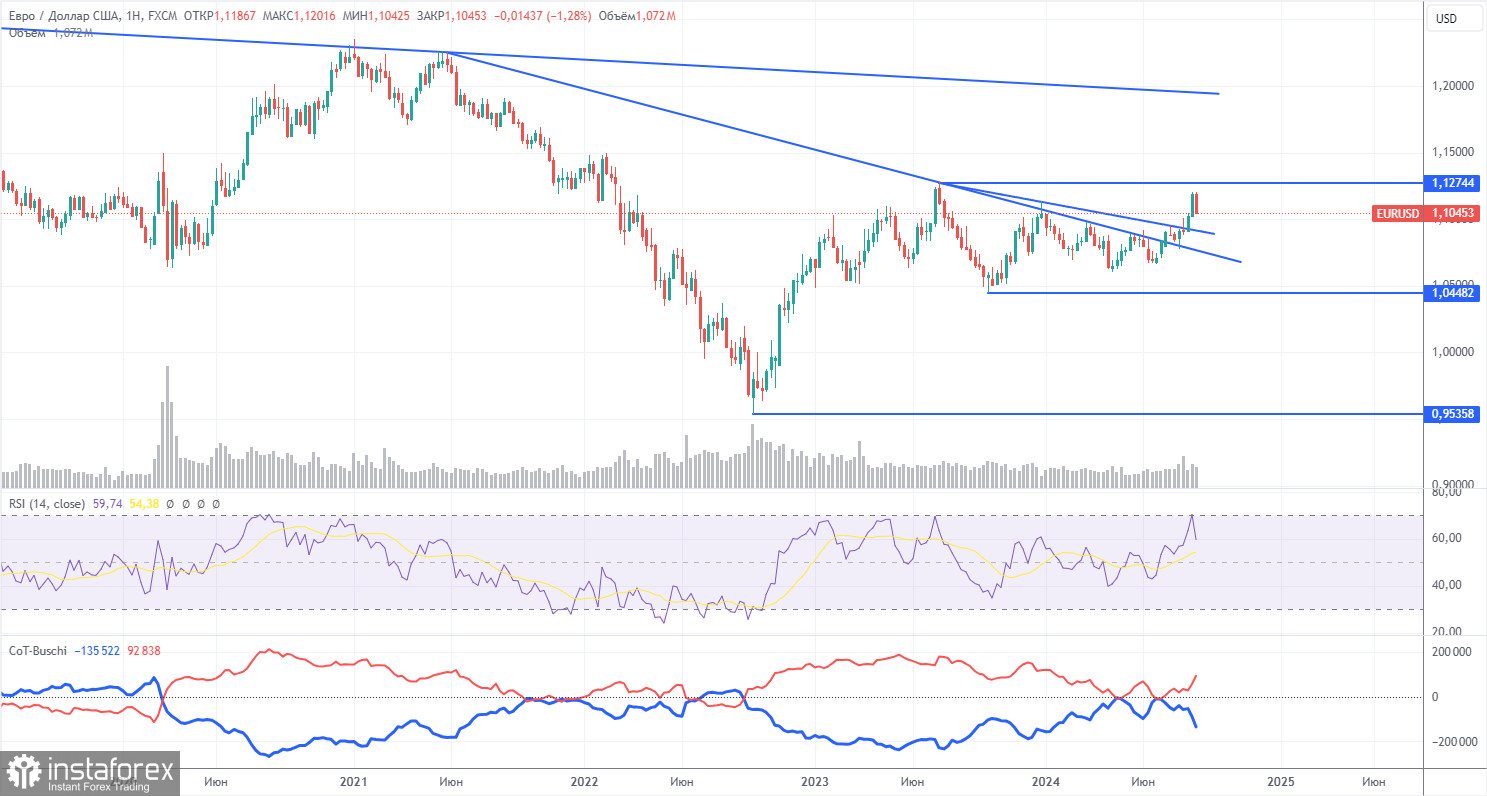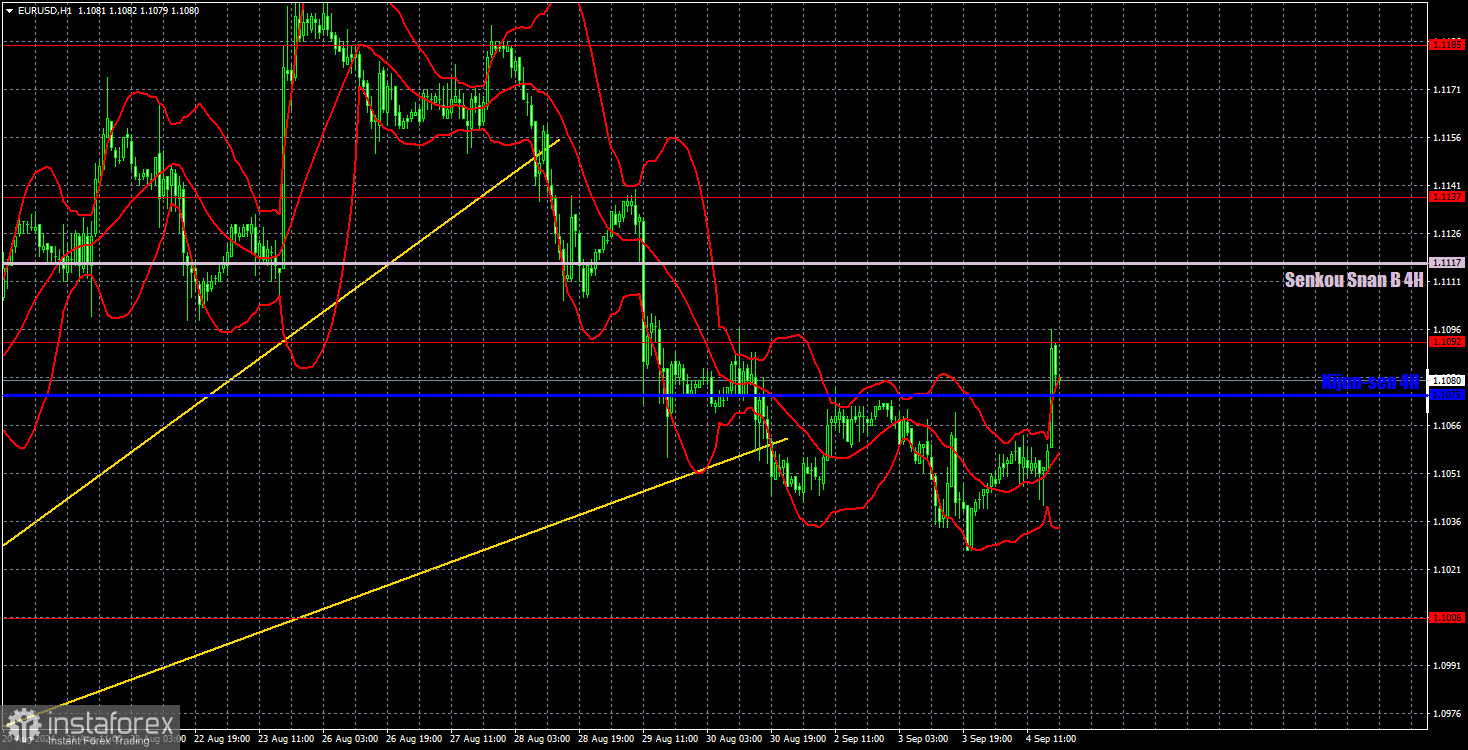Analysis of EUR/USD 5M

The EUR/USD pair surged sharply during the US trading session on Wednesday, while it remained stagnant during the European session. Some reports or events triggered such a sharp upward movement. And there was only one event yesterday. The JOLTs report on the number of job openings in July. Even before this report was published, we warned that the actual value could again be lower than the overly optimistic forecast. It's simple – the unemployment rate rose in July, yet the market did not anticipate a decrease in job openings—another paradox of expectations and forecasts.
Since the number of job openings was lower, it's unsurprising that the dollar fell again. Fortunately, it only fell to the Ichimoku indicator lines, which held back the bulls' onslaught. Thus, the new downward trend is still intact but will be quickly reversed if things continue like this. Remember, there are two days left until the end of the week, and NonFarm Payrolls, unemployment, and the ADP report will be published during these days. As we can see, the dollar has plenty of chances of failing again.
We can only note a bounce off the Senkou Span B lines, Kijun-sen, and the 1.1092 level from Wednesday's trading signals. If this bounce remains just a bounce, we can expect a resumption of the decline with a target of 1.1006. However, we remind traders again that the dollar is in danger this week, as the market again expects overly optimistic values for the most important indicators. Thus, there is a high probability that the actual values will be lower. And that's what the market, which has loved selling the dollar in recent months for any reason or no reason, needs.
COT report:

The latest COT report dated August 27 shows that the net position of non-commercial traders has long been bullish and remains so. The bears' attempt to take over failed spectacularly. The net position of non-commercial traders (red line) declined in the second half of 2023 and the first of 2024, while that of commercial traders (blue line) has grown. Currently, professional players are again increasing their long positions.
We also still do not see any fundamental factors supporting the strengthening of the euro, and technical analysis indicates that the price is in a consolidation phase—in other words, a flat. In the weekly time frame, it is clear that since December 2022, the pair has been trading between levels 1.0448 and 1.1274. In other words, we have moved from a seven-month flat into an 18-month one.
At the moment, the red and blue lines are slightly moving away from each other, which indicates that long positions on the single currency are increasing. However, such changes cannot be the basis for long-term conclusions within a flat market. During the last reporting week, the number of long positions in the non-commercial group increased by 24,000, while the number of short positions decreased by 12,800. Accordingly, the net position increased by 36,800. Yet, there is still potential for the euro to fall.
Analysis of EUR/USD 1H

In the hourly time frame, the EUR/USD pair finally has a real chance to end the unjustified upward trend. A new downtrend has formed. With two weeks to go until the Federal Reserve meeting, the market could very well resume rampant selling of the US dollar, but at least now, there are technical grounds to expect a drop in the pair. However, if the US labor market and unemployment data disappoint again this time, the dollar could quickly slide back to where its ascent began.
For September 5, we highlight the following levels for trading: 1.0658-1.0669, 1.0757, 1.0797, 1.0843, 1.0889, 1.0935, 1.1006, 1.1092, 1.1137, 1.1185, 1.1234, 1.1274, as well as the Senkou Span B (1.1117) and Kijun-sen (1.1075) lines. The Ichimoku indicator lines can move during the day, so this should be considered when identifying trading signals. Remember to set a Stop Loss to break even if the price has moved in the intended direction by 15 pips. This will protect you against potential losses if the signal turns out to be false.
On Thursday, the European Union plans to publish the second estimate of the services sector business activity index, and that's all. There are far more important reports like ADP and ISM in the services sector in the United States. These two reports may affect the course of the US dollar in the second half of the day.
Explanation of illustrations:
Support and resistance levels: Thick red lines near which the trend may end.
Kijun-sen and Senkou Span B lines: These Ichimoku indicator lines, transferred from the 4-hour timeframe to the hourly chart, are strong lines.
Extreme levels: Thin red lines from which the price previously bounced. These provide trading signals.
Yellow lines: Trend lines, trend channels, and other technical patterns.
Indicator 1 on COT charts: The net position size for each category of traders
 English
English 
 Русский
Русский Bahasa Indonesia
Bahasa Indonesia Bahasa Malay
Bahasa Malay ไทย
ไทย Español
Español Deutsch
Deutsch Български
Български Français
Français Tiếng Việt
Tiếng Việt 中文
中文 বাংলা
বাংলা हिन्दी
हिन्दी Čeština
Čeština Українська
Українська Română
Română

